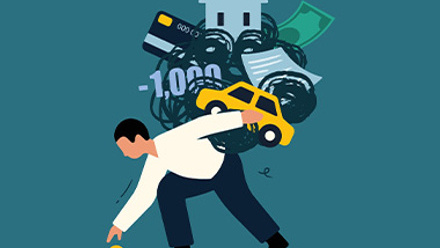How to use share save schemes as a way to build both employee engagement and financial wellbeing

Employers are also struggling to maintain employee engagement levels in the face of continued remote working and redundancy fears. Unless the government extends the furlough scheme, due to end on 31 October, there will be “a tsunami of job losses,” according the Trades Union Council.
With the stock market crash leaving many companies’ shares in the doldrums too, it’s not easy to spot the silver linings amid all this bad news.
But there is a way to turn a lower share price to your – and your employees’ – advantage, all while boosting engagement and supporting financial wellbeing: Save As You Earn (SAYE) share schemes, known as Sharesave.
Our data suggests these tax efficient schemes remain popular with employees, despite the current uncertainty. New schemes are proving particularly in demand – one recent launch attracted £176,000 of monthly savings, up 56% on 2019 – perhaps due to their low-risk nature and hopes of rising share prices.
Graham Bull, head of all-employee share plans at EQ, said: “Participation rates have remained fairly stable with new schemes attracting about 30% of those eligible for them, though in some cases take-up has been much higher.
“Three-year schemes are much more popular than five-year schemes, partly because younger workers expect to move jobs more quickly than that. Being made redundant is classified as being a ‘good leaver’, so redundancy worries don’t need to put people off joining.”
Financial wellbeing benefits
Sharesave schemes are a no brainer when it comes to promoting financial wellbeing. Not only are they a great way to get people into the savings habit, the very low risk levels with a share option also make them an ideal introduction to investing in equities. However, to promote responsible behaviours, it’s important to communicate clearly with employees about their choices as their schemes approach maturity.
A lot of people earmark the money from Sharesave for a big purchase such as a holiday. Others simply transfer it into a bank account paying little or no interest. But there are lots of ways to make Sharesave returns go further by investing them longer term, for example by transferring them tax-free into a flexible Individual Savings Account (ISA).
To get this message across, employers need to understand what their employees want, and focus communications on financial security.
“Communicating choices at maturity is a great opportunity to educate people about other investment vehicles such as ISAs, Lifetime ISAs (LISAs), and Self-invested Personal Pensions (SIPPs),” said Bull.
Engagement gains
While making money is many employees’ main Sharesave objective, lots also sign up to feel more involved with the company – and reap the rewards of the hard work they put in. This should be balanced with risk. It’s not a good idea to put all of your eggs in one basket, and again this is where financial education can help.
Martin Parish, area director at Aon, is a “huge fan” of them for this reason. “I see SAYE schemes as a largely unsung hero that can boost engagement in lots of ways,” he said. “For the three years employees save, they have a vested interest in the business.”
Promoting the benefits of Sharesave schemes as well as pensions should also help employers to engage with a wider range of employees – including the often trickier younger demographic. And in today’s uncertain climate, encouraging employees to invest in a three-year scheme is an invaluable opportunity to enhance loyalty and nurture a much-needed sense of security.
The author is Andrew Woolnough, director, EQ HR Solutions.
This article is provided by EQ HR Solutions.
Supplied by REBA Associate Member, Equiniti
Hi we are EQ; some may know us as Equiniti! We provide specialist reward, benefits and payroll solutions.







